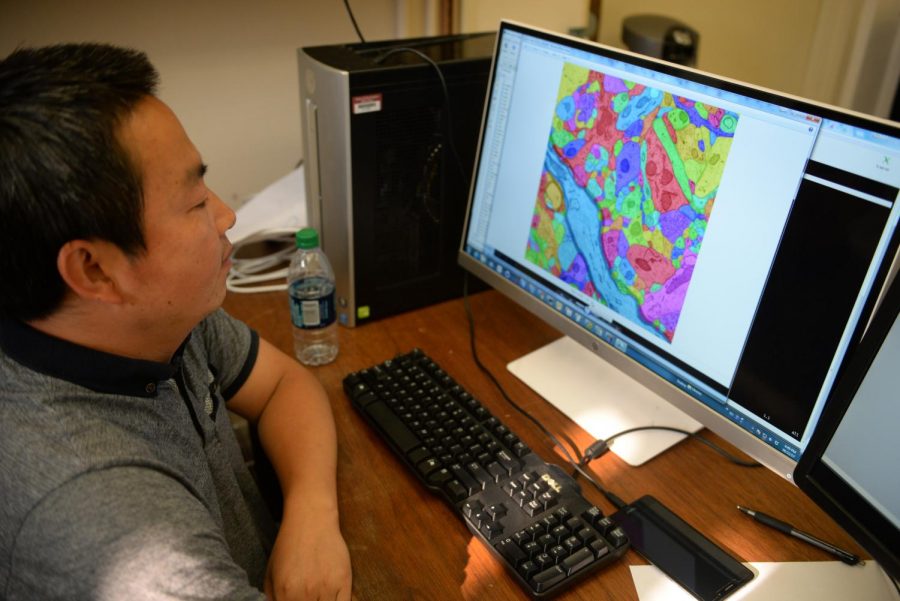Classroom technology should reinforce student-professor bond
New forms of communication can strain connection, or create new chances for in-person collaboration
CODY COTTIER | DAILY EVERGREEN FILE
Classroom technology has the potential to hinder the relationship between instructors and students by limiting their contact. When used properly, however, it can also facilitate more in-person meetings.
August 22, 2018
In order for people to learn effectively, the interaction between teacher and student must be strong.
Constant supervision is a must in kindergarten, there’s always at least one kid just moments from throwing a tantrum or desperately crying for a parent they miss at home. The comfort and security of an adult creates a natural bond between child and instructor, even in college.
With growing independence, the teacher-student bond changes until it either deepens or fades entirely.
Our current technology is both a knife and needle to this bond; it can sever what’s left when a student only communicates to a teacher through a screen or mend it by allowing students to arrange in-person help with teacher assistants or professors.
None know this better than Jeanette Martin, resident senior instructor in the department of mathematics and longtime advocate for creating an improved learning environment.
She’s personally explored application of recording lectures and giving access to select students, a kind of test run that if proved successful could mean students could enter a lecture hall through online videos.
Unfortunately, the results were varied.
Some students took it with responsibility and ease, others as just a test of their procrastinating ability. Though Martin “prefers her students to be in class,” she is also open towards refining the ability to record lectures and distribute them.
If the resources are put forth by WSU or a third-party, we gain the ability to access lectures anytime, completely changing the rigid class schedule at WSU. It allows flexible studying as well as the chance to host larger class sizes without the need to waitlist or add more sections.
But with the potential for an adjustable schedule, there comes a greater risk that the professor and TAs become underutilized as their presence is less evident in a digital classroom.
To address these concerns, there is a solution in the form of everyday social apps like Facebook, Instagram and Twitter.
Martin has no professional social accounts students can contact her with or by which she could reach out. She’s stated that there are many professors who would never even consider this as a means to connect with their students.
These platforms are a valuable and too often overlooked medium students can use to accessibly and efficiently send and receive messages as individuals, groups, or even whole classes.
Revisions, corrections, and questions can be passed back and forth without the inconvenience of an arranged meeting, and the instructor may simply address it whenever they please.
Though with these prospects come concerns about students failing to live up to the increased responsibility these lenient classes have in store.
But college has long been the rite of passage between adult and childhood, a passage incomplete without learned independence. And that independence must be entrusted to them, a freedom they must learn to control, lest others control it for them.
Give students the choice on what level of technology suits them so they can see for themselves the impact it has.
It is better than forcing students into cramped rooms under even tighter schedules. Greater still in creating personal interactions between individuals and their educators. And irrefutably best in preparing both our education system and our students for a modern, multimedia world.










